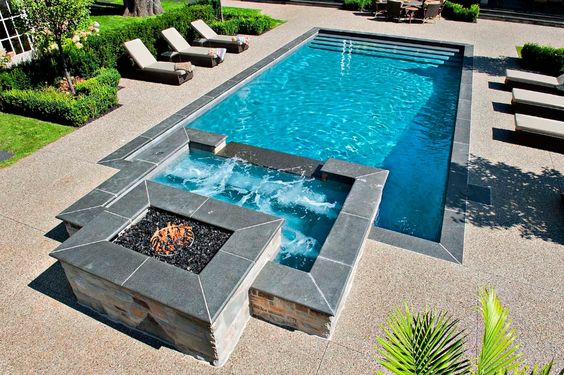
Please note that price information in this article was based on data from 2017, and may now be outdated.
Imagine transforming your home into a resort-like oasis where you can relax or entertain with your very own spa or hot tub. Before turning this dream into a reality, there are several factors and choices to be considered. A spa may seem like the cheaper and simpler option compared to installing a pool, but there are a variety of price ranges available. This guide will teach you the difference between indoor & outdoor spas, in-ground & portable spas and the various prices and installation disruptions you can expect.
Indoor or outdoor – what’s it going to be?
The first decision to tackle is deciding whether you’d like to situate the spa inside or outside. If you are leaning towards an indoor spa, which offers complete privacy and climate control, there’s a few issues to consider, including:
- Additional support required from weight of spa
- Increased humidity and the need for proper ventilation
- Waterproofing the spa room
- Construction & modifications to the home
Renovating or building a bathroom to include a spa avoids most of these issues, as the room is already set up to handle wet and humid conditions.
On the other hand, an outdoor spa can be easily integrated into the backyard landscape, just like a pool. People often enjoy the serenity of being surrounded by nature, and still being able to spend time outdoors on cooler nights. Again, if you are interested in an outdoor spa, keep in mind that:
- Rain, wind and extreme temperatures could prevent spa use
- There is higher chance for dirt and debris to enter the spa (through people’s feet or wind)
- Spa must be covered when not in use
In-ground vs portable
The most obvious difference between in-ground and portable spas is price, however, this is not as great as you might expect. Increasingly, similar shells are being used for both types of spas, and the cost of excavation for an in-ground spa is not high. On average, you can expect to pay:
- Low range: $2000 (basic, portable 3 person spa)
- Mid range: $5000-$8000 (5 person portable/in-ground spa)
- High range: $12000-$15000+ (in-ground swim spa)
It should be noted that building an in-ground spa is always more cost-effective in conjunction with an in-ground pool.
On top of costs, the advantages and disadvantages of portable & in-ground spas are summarised below:
In-ground
Advantages
- Can add to overall value of home
- Able to customise shape and size to suit your space
- Integrated well with pool to create a visual impact in the yard
Disadvantages
- Require professional help from excavators, concreters and/or spa installation specialists
- They are more costly than portable spas
Portable
Advantages
- Typically cheaper than in-ground spas
- Can be installed easily and running within a few hours
- Ideal for smaller yards
- Moving house? Take it with you
- Typically energy efficient
- Standard shapes and sizes makes buying covers easy
Disadvantages
- Tend to stick out above the ground and become a focal point
- Limited to the sizes and shapes offered by retailers
Other costs to consider…
Ongoing cleaning & maintenance
You’ll realise very quickly that spas, given they hold a smaller volume of water compared to pools, require extra chlorination and regular drainage. Maintaining your spa is simple and important to keep your water healthy and the spa running well. Proper spa maintenance requires frequent cleaning of the cover and filter as well as checking checking chemical levels and adjusting as needed.
Structural elements
The area that the spa rests on must be able to provide a support base for not only the spa, but the weight of water and people it contains. A concrete base is recommended as the strongest and most durable option.